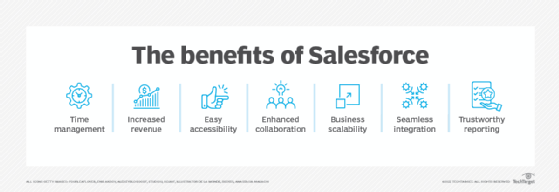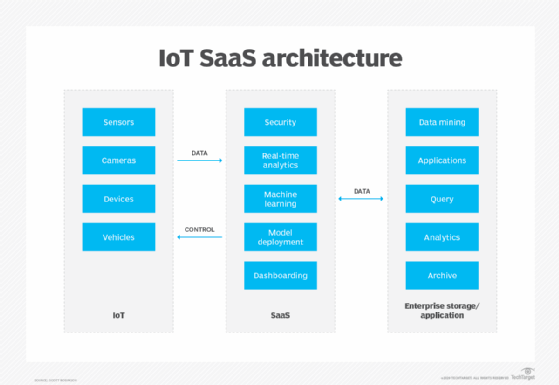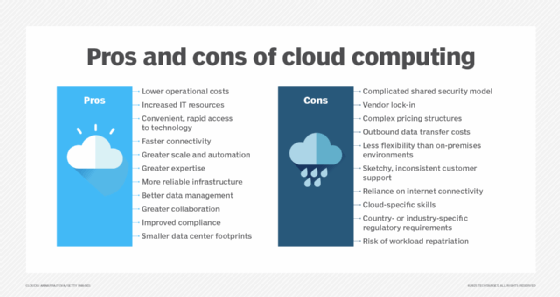What is IoT Cloud (Salesforce IoT Cloud)?
IoT Cloud is a Salesforce platform designed to store and process internet of things (IoT) data. Salesforce IoT Cloud is powered by Thunder, a massively scalable rule-based real-time event processing engine.
Salesforce is a San Francisco-based customer relationship management (CRM) and social enterprise software as a service (SaaS) provider. The company launched IoT Cloud in the fall of 2015 at its annual Dreamforce user conference.
How does Salesforce IoT Cloud work?
The Salesforce IoT Cloud platform collects the enormous volumes of data continuously generated by devices, sensors, websites, applications, customers and partners, then initiates actions for real-time responses.
Businesses adopt Salesforce IoT Cloud to increase value from their internet-connected devices. IoT sensors and machines transmit real-time data streams to Salesforce's cloud platform, which processes this data using its Thunder engine. Thunder, a high-performance event processing engine, analyzes the data, looking for trends and anomalies.
The power of Salesforce IoT Cloud lies in its analytics capabilities and ability to trigger real-time actions while seamlessly integrating with other Salesforce products and services. Businesses using IoT Cloud can experience rapid improvements in operational efficiency through predictive maintenance and significant enhancements in customer service with proactive support. Companies can also make quick, data-driven decisions that lead to better outcomes.
One example of a business implementation of Salesforce IoT would be enabling wind turbines to adjust their behavior based on current weather data. Another scenario could be enabling airline passengers whose connecting flights are delayed or canceled to rebook before the planes they are on have landed.
Salesforce IoT Cloud can provide business users with a much more comprehensive and integrated perspective on their customers without massive technical expertise or the services of a data analyst. The platform can take in billions of events a day, and users can build rules that specify events to act on and actions to take. IoT cloud is data format- and product-agnostic; output connectors enable communication with Salesforce clouds or third-party services.
Salesforce IoT Cloud integrates seamlessly with Salesforce's Customer 360 platform. This enables organizations to combine sensor data with customer information in their CRM system, unlocking capabilities such as personalized customer experiences. For example, retail stores can use data from connected inventory tags to personalize in-store recommendations for customers, and healthcare providers can remotely monitor patients' conditions using connected devices. In the healthcare industry, Salesforce IoT Cloud can also track the temperature of vaccines in transit, ensuring their quality. In manufacturing, it can monitor the performance of machinery and predict maintenance needs.
IoT Cloud also includes encryption and access controls, which ensure only authorized access to and management of device data, keeping sensitive data safe.
Predictive maintenance enables companies to foresee potential failures by analyzing sensor data from equipment and proactively scheduling maintenance. This proactive approach not only saves money on repairs but also minimizes production downtime.
Salesforce IoT Cloud is not limited to a single industry. Various organizations across diverse sectors, including manufacturing, healthcare and utilities, can utilize its application. This versatility empowers businesses to gain valuable insights from their connected devices, optimize operations and achieve better outcomes, regardless of their field.

What is Salesforce Data Cloud?
Salesforce Data Cloud is a suite of tools designed to integrate business customer data. It combines internal data from Salesforce products like CRM with external information from social media and marketing tools and provides a comprehensive view of the target audience and customer base.
Data Cloud unifies customer data to unlock many benefits, including personalized marketing campaigns and recommendations based on individual customer preferences. The platform can also automate tasks such as lead scoring and segment and streamline workflows. Deep data analysis helps businesses better understand customer trends, identify opportunities and make data-driven decisions.
Salesforce Data Cloud combines the following services:
- Customer 360. A central hub that integrates data from various sources, creating a unified customer profile.
- MuleSoft Anypoint Platform. MuleSoft is a tool that helps companies seamlessly integrate data from external sources to provide a complete picture.
- Einstein Data Management. A tool that cleanses, Einstein Data Management standardizes and enriches customer data for better accuracy and usability.
- Tableau CRM (formerly Einstein Analytics). A tool that helps to visualize and analyze customer data and turn insights into actionable strategies.

What is Salesforce Genie?
Salesforce Genie is a data management platform that prioritizes real-time data integration and access. Unlike traditional data platforms, Genie's strength lies in its real-time ability to process and deliver data streams. This feature empowers businesses to respond immediately to customer behavior and market changes, leading to more agile and effective decision-making.
Genie acts as a comprehensive customer data platform, harmonizing customer data from various sources including CRM systems, marketing automation tools, social media and IoT devices. This holistic view of the customer equips businesses with a wealth of knowledge, enabling them to deliver highly personalized experiences. It seamlessly integrates across the entire Salesforce Customer 360 platform and makes data readily available for various applications such as Sales Cloud, Service Cloud and Marketing Cloud. Genie also integrates with external tools through platforms such as MuleSoft Anypoint Platform.
In essence, Salesforce Genie equips businesses with a real-time, unified view of their customer data. Companies can quickly make data-driven decisions, offer personalized customer experiences, and automate tasks and workflows whenever this is the case.

How does Salesforce achieve a single source of truth?
Salesforce's approach to customer data management embodies the concept of a single source of truth (SSOT). The Customer 360 platform acts as a central hub, integrating customer data from internal Salesforce products (CRM) and external sources (social media, marketing tools). This eliminates data silos and ensures everyone has access to the same up-to-date customer information.
This unified view of customer data enables businesses to deliver more personalized customer experiences with targeted recommendations and consistent service across all touchpoints. Central management also improves data accuracy, reducing errors and inconsistencies.
Furthermore, real-time access to accurate customer data empowers data-driven decisions for marketing campaigns, product development and resource allocation. Salesforce achieves an SSOT through its integrated suite of products, which helps foster improved customer experiences and business outcomes.
Check out IoT SaaS platform providers to help streamline adoption and the top IoT business models. Read our ultimate IoT implementation guide for businesses. Learn about current and potential future trends in IoT and SaaS security best practices to protect applications.







